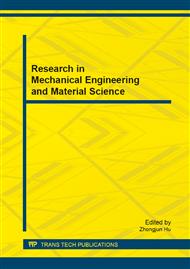p.3
p.10
p.14
p.18
p.22
p.28
p.32
p.38
Research of Line Contact Rotate-Milling about Space Ruled Surface
Abstract:
For there are small contact area between tool and workpiece, low machining precision, and poor quality of face in point-milling, point-milling and line contact milling used in processing are analyzed on this paper. Line contact rotate-milling using which the workpiece is processed as the profile laws is shown, the realization method of line contact rotate-milling is discussed in milling various surfaces, the movement to processing the various surfaces is studied, and the movement function is analyzed. Next, the factors affecting the machining accuracy are analyzed, and the main factors - the geometric errors are analyzed and integrated. Then the error model is created in differential analysis,the output accuracy is analyzed in Matlab. To point-milling, the line contact rotate-milling is the method of processing based on face. In this processing, the way of no profile theory-error is taken, the tool contact length with the workpiece is increased, axis as few as possible and even single-axis is taken, and the accuracy of processing is improved.
Info:
Periodical:
Pages:
3-9
Citation:
Online since:
October 2013
Authors:
Price:
Сopyright:
© 2014 Trans Tech Publications Ltd. All Rights Reserved
Share:
Citation:


